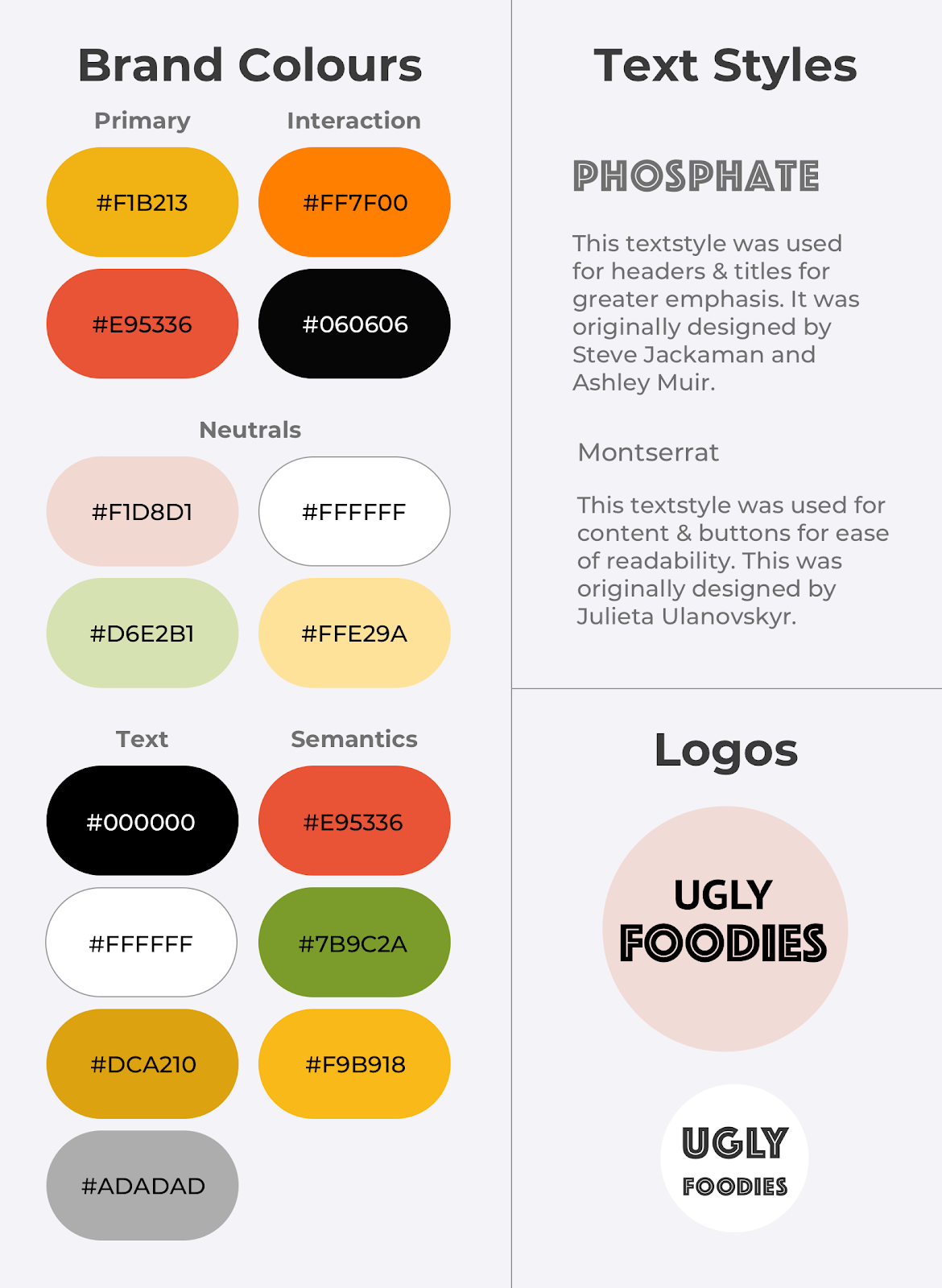Ugly Foodies
The Ugly Foodies app is a design sprint project that focused on creating an empathetic design solution to help connect families to ugly foods available for purchase in order to reduce food waste in Canada.
-

Problem
Half of all food produced worldwide is wasted. Diverting food waste from the landfill would reduce costs for taxpayers, since Toronto taxpayers spend $10 million a year getting rid of food waste. In Toronto, single family households discard 275 kgs of food waste each year. Women are the primary purchasers in households with family dwellings purchasing larger quantities of food than any other household type. Starting at the bottom of the food chain, 30 percent of food in North America is discarded because it is not pretty enough — where it doesn’t make it into grocery stores and bypasses the potential of having someone purchase ugly foods.
-

Challenge
How might we connect environmentally conscious families with ugly food to help them create a positive and lasting impact?
Research
-
Educate the consumer and connect them with resources to reduce ugly food waste.
-
Recent research shows that 20% (or 11 million tonnes) of all the food produced in Canada annually becomes avoidable food loss or waste – food that could have been eaten, but was instead landfilled, incinerated or managed as organic waste. There are several initiatives currently in place to address food waste such as wasteless.ca informing residents about reducing food waste, Flashfood that connects consumers with less desirable foods, and many charities such as Second Harvest food rescue and delivery. However, these approaches aren’t widespread and usable.
-
We made the following assumptions:
Farmers are willing to open up their farms to the public.
Consumers will be able to purchase ugly food at a discount.
Consumers are willing to change their lifestyle/daily habits ie. meal planning, freezing, donating, composting
Current educational resources regarding ugly food, composting, etc. are up-to-date and detailed with information valuable to consumers.
We asked ourselves:
How can we dispel ugly food stereotypes?
Will consumers be able to use the app for groceries?
How can we make ugly foods readily accessible to consumers?
-
We interviewed 15 people between the ages of 23 – 60.
Themes:
Knowledge
Time
Healthy Living
Key insights:
Main concern was acquiring top quality of food such as seasonal purchasing
Current issues were long lineups at the grocery store and spending money
General openness to understanding food waste including proper storage and disposal of foods
Participants plan their grocery purchases based on the household, coupons, and meal-planning
Little knowledge about ugly food’s nutritional value; interviewees typically avoid it because it’s unappealing
Motivated to purchase ugly food if it’s at a discounted rate and as fresh as the other food available
Journey map
-

Deciding to buy food
-

Going to the store
-

Getting a cart or basket
-

Comparing and selecting items based on price, quality & packaging
-

Paying for items
-

Bringing items home
The areas of opportunity in the user’s journey lie within the purchasing of food. It is there where we will make ugly foods available to consumers by highlighting their reduced costs and the equivalent nutritional value. This will serve to redirect ugly food from the landfill, and put the power in the hands of the individual.
Inspiration
Using a combination of photographs, which would allow customers to see exactly what products they would be receiving, along with illustrations would maintain a sense of playfulness and youthfulness within the product. Bright colours and child-friendly characters inspired the brand.
Initial ideas
Game that engages children and makes purchasing ugly food a family activity
Marketplace to buy ugly food in order to reduce food waste
Educational platform for families that teaches about ugly food and its nutritional information
Providing incentives for purchasing ugly food
Charitable donation option at checkout
We sketched out the initial ideas then used heat mapping (dot voting), speed critique, & straw polls to decided on the direction we wanted to take.
Sketches
An ugly food purchasing & selling app that connects local growers with families, while simultaneously teaching families about ugly food in an interactive way.
User persona
An environmentally conscious family that is looking to reduce its food waste and overall ecological footprint.
The mother, Karen, is the primary meal planner and buyer of groceries. She plans grocery trips based on household needs, discounts and availability. She uses an iPhone and a laptop.
“My family is important to me. I want to ensure that they are environmentally & socially conscious people.”– Karen
-
Nutritional health
Spending quality time with family
Environmental sustainability
-
To reduce her family’s contribution to food waste
To buy high quality, nutritional food for her family
To teach her kids good habits surrounding food purchasing and preparation
-
Long line-ups at grocery stores
Difficulty finding access to ugly foods
Storyboard
Illustrating Karen and her family’s journey using our solution gives us a sense of how it will help achieve their goals and solve their pain points.
Lo-mid fi wireframes
Visual identity
High fidelity design
-
User Feedback
Shipping details were requested
Additional information about charities needed
Potential to broaden the audience to include millennials who want to make an impact and save money
Navigation bar icons unclear
-
Key learnings
As our first introduction to the design sprint methodology, we found the process required a great deal of teamwork. It was sometimes challenging to align our individual visions for the project, however, with patience and trust in the process we were proud of our final product. Sprints can feel extremely fast paced and this was no exception despite being twice as much as other design timelines.
-
Next steps
Users requested more information about what children can do within the app. The home page and education pages of the app also require differentiated content and clear themes.











